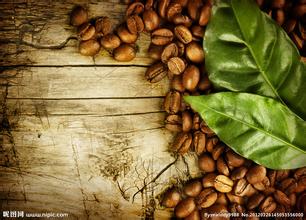The citrus flavor can be called the best Ethiopian coffee in the world.
Even the official Ethiopian research unit cannot say how many Arabicans there are in Ethiopia. Coffee cooperatives on one mountain certainly grow different varieties than those on another, and even small farmers in the same area grow different varieties of coffee. Some estimate that there are at least 2,000 varieties of Ethiopian coffee, and there are even more than 4,500 varieties. Ethiopian beans appear to be a bit malnourished compared to the fat bodies of Bourbon 'SL28', the dominant variety in Kenya to the south, or the Central and South American and Asian tibeka. But "beans" can not be judged by appearance, Ethiopian coffee citrus aroma can be called the world's best, whether instant coffee or freshly ground coffee, extraction on the smell of orange or lemon fragrance. On the palate, it has a rich floral, fruity and sour aroma that is characteristic of Ethiopia, but the body or consistency is slightly poor. The biggest drawback is that it is easy to bake unevenly, especially sun beans. Even the best Grade3 Harald sun-baked beans often show uneven color, which is the biggest defect of Ethiopian beans, but fortunately it does not affect its good flavor. For coffee fans, don't care how the beans look, the most important thing is to drink. Ethiopian washed beans are much more stable than sun-dried beans, whose flavor fluctuates greatly from year to year, so be sure to cup them several times before buying them in large quantities. good sun-dried beans have a much deeper flavor than washed beans, but if you buy mis-treated sun-dried beans, you will certainly be speechless, which is the voice of many coffee fans. ethiopia beans are easy to identify. most beans are small and thin and pointed, and they are called 'longberry'. they are often mixed with small oval short beans, which are called' shortberry'. they look different in size and shape. Commercial bulk beans of Grade4 or Grade5 are mostly mixed with hundreds of different seeds from each region, so the phenomenon of uneven beans is most obvious, and it is difficult to roast evenly. Ethiopian coffee beans are divided into five grades. The first and second stages are water-washed beans. Grade1 means 0~3 defective beans per 300 g of raw beans;Grade2 means 4~12 defective beans per 300 g. Grade 1 washed beans are extremely rare and generally difficult to buy. At present, all washed beans exported from Ethiopia are Grade2. The quality of sun-cured beans is ranked as Grade3, Grade4 or Grade5. Although Grade4 has significantly fewer defective beans than Grade5, coffee farmers claim that in order to save taxes on exports, they often lower the Grade4 to Grade5 to save money. This may just be a marketing ploy, but in fact Grade5 is not as good as Grade 4.

Important Notice :
前街咖啡 FrontStreet Coffee has moved to new addredd:
FrontStreet Coffee Address: 315,Donghua East Road,GuangZhou
Tel:020 38364473
- Prev

Uganda coffee producing area Flavor Taste Introduction Fine coffee
In order to improve coffee quality and reduce costs, Uganda abolished the exclusive rights of the Coffee Marketing Board (CMB) in November 1990. Most of the work previously undertaken by the Coffee Marketing Committee has now been transferred to cooperative organizations. Privatized coffee plants generate two-thirds of the country's export revenue, so the government imposed a tax on coffee plants.
- Next

Ethiopian coffee treated with water to introduce boutique coffee
Ethiopian sun beans are generally G3--G5, but they are G2 (I will open a new post for Ethiopian coffee beans), which is equal to the grade of washed beans. Although there are still a few defective beans, they are commendable compared to the sun beans of Harald and Sidamo. This bean is baked before the second explosion, and is brewed by hand and siphon. When grinding the beans, you can smell the sweet aroma of the sun.
Related
- Does Rose Summer choose Blue, Green or Red? Detailed explanation of Rose Summer Coffee plots and Classification in Panamanian Jade Manor
- What is the difference between the origin, producing area, processing plant, cooperative and manor of coffee beans?
- How fine does the espresso powder fit? how to grind the espresso?
- Sca coffee roasting degree color card coffee roasting degree 8 roasting color values what do you mean?
- The practice of lattes: how to make lattes at home
- Introduction to Indonesian Fine Coffee beans-- Java Coffee producing area of Indonesian Arabica Coffee
- How much will the flavor of light and medium roasted rose summer be expressed? What baking level is rose summer suitable for?
- Introduction to the characteristics of washing, sun-drying or wet-planing coffee commonly used in Mantenin, Indonesia
- Price characteristics of Arabica Coffee Bean Starbucks introduction to Manning Coffee Bean Taste producing area Variety Manor
- What is the authentic Yega flavor? What are the flavor characteristics of the really excellent Yejasuffi coffee beans?

